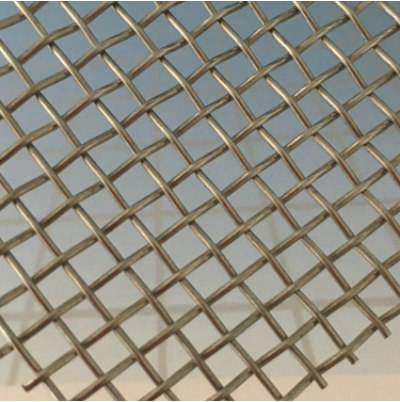Metal Grid: Structure and Applications in Modern Technology
A metal grid is a structured, open lattice of interconnected metal wires or bars, often in the shape of a mesh or net. Metal grids have diverse applications across various industries due to their strength, conductivity, and flexibility in design. They are used in everything from electronic devices to construction and energy storage systems, where they provide structural support, electrical conductivity, or filtration.
Ti Metal Mesh
● Key Characteristics of a Metal Grid
1. Material Composition: Metal grids are made from materials like aluminum, copper, nickel, stainless steel, and other metals chosen for specific properties like conductivity, strength, or corrosion resistance.
2. Grid Pattern and Density: The pattern of a metal grid can vary based on its intended function. Grids can be woven, expanded, welded, or perforated, resulting in different mesh densities that influence strength, airflow, conductivity, and other properties.
3. Conductivity: Metal grids are often chosen for applications requiring conductivity, such as in batteries, solar cells, and electronic components, where they facilitate the flow of electric current.
4. Strength and Durability: Metal grids provide mechanical strength and can endure environmental stress, making them suitable for construction and industrial applications.
● Applications of Metal Grids
1. Energy Storage and Batteries: Metal grids are used in batteries, particularly in lead-acid and nickel-based batteries, where they function as current collectors, supporting the active material and conducting electricity.
2. Solar Cells: Metal grids play an essential role in photovoltaic (PV) cells, particularly in silicon-based solar cells, where they serve as electrodes to collect and transport electric charge generated from sunlight.
3. Filtration Systems: Due to their open structure, metal grids are used in filtration for industrial, chemical, and water treatment applications. They allow liquids or gases to pass through while blocking particles of certain sizes.
4. Construction and Architecture: Metal grids reinforce concrete structures, provide structural support in facades, and create decorative designs. Grids in fences, guardrails, and safety barriers protect and guide pedestrian and vehicular traffic.
5. Electronics and Electrical Equipment: Metal grids serve as grounding and shielding in electrical systems to prevent electromagnetic interference (EMI) in sensitive electronics.
6. Heating Elements: Metal grids with high thermal conductivity are used as heating elements, especially in radiant heating systems and devices where controlled heat distribution is required.
● Types of Metal Grids
1. Welded Mesh: Created by welding intersecting wires at their junctions, offering high strength and stability, commonly used in construction.
2. Expanded Metal Grid: Formed by cutting and stretching a metal sheet to create a grid pattern. It's durable and lightweight, ideal for ventilation covers, filters, and structural reinforcement.
3. Perforated Metal: A grid formed by punching holes into a metal sheet, commonly used for filtration and aesthetic applications in architecture and design.
4. Woven Wire Mesh: Created by weaving wires into a grid pattern, providing flexibility and strength for use in sieves, filters, and architectural applications.
5. Electroformed Metal Grids: Precision grids created by electroforming processes, often used in high-tech applications like electronics and solar cells due to their fine patterning capabilities.
● Advantages of Metal Grids
1. Strength and Stability: Metal grids offer structural reinforcement, making them ideal for load-bearing applications.
2. Customizability: Metal grids can be customized in size, thickness, and pattern to fit specific requirements, from small electronic components to large construction projects.
3. High Conductivity: Metal grids facilitate efficient electrical and thermal conductivity.
4. Corrosion Resistance: Grids made from stainless steel, aluminum, or coated metals can withstand corrosion, making them durable in harsh environments.
● Conclusion
Metal grids are a versatile and essential component across various industries, contributing to advancements in energy, construction, filtration, and electronics. Their strength, conductivity, and customizable design make them indispensable in applications requiring durability, precise filtration, or effective electrical flow. As technologies evolve, metal grids continue to adapt, meeting the demands of emerging applications in renewable energy, construction, and beyond.
